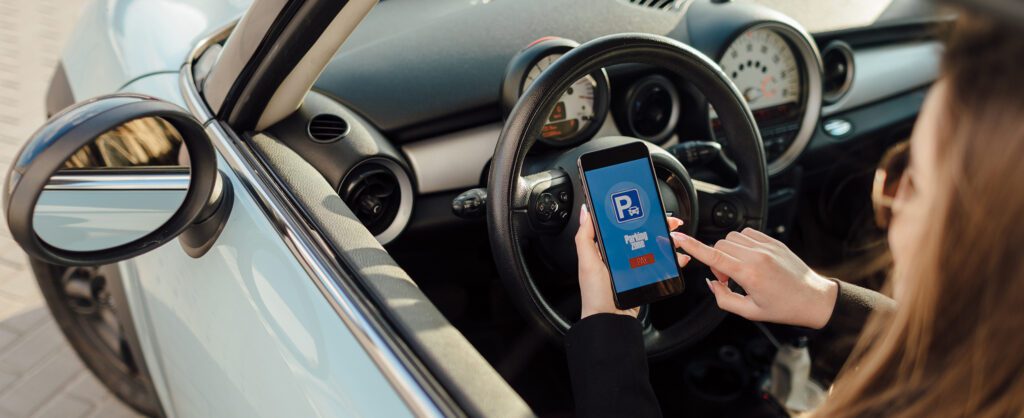Did you know that parking represents an average of 37% of non-aeronautical revenues for airports in North America? While most visitors don’t give it a second thought, the revenue generated by parking facilities plays a significant role in ensuring their local airport is adequately funded while minimizing the need for additional taxation and bonding measures.
At a time where inflation (and corresponding interest rate increases) are driving additional construction costs, labor expenses, and less-favorable financing terms, that revenue is absolutely critical. A natural response to rising operating expenses is to seek out ways to maximize your current revenue drivers—and with transportation network companies (TNCs) eating into parking revenue, options feel limited.
The good news for many airports is their parking facilities offer an area of unrealized revenue potential, and improved parking inventory management paired with the implementation of demand-based, dynamic pricing is at the heart of it. To achieve this, operators will need to commit to the modernization of their parking services.
While it’s by no means a small undertaking, modernizing an airport’s parking facilities and the systems that support them is a worthwhile investment as it unlocks new avenues for improved revenue generation and operational efficiency.
READ MORE | Auckland International Airport Maximizes Its Car Park Revenue with IDeaS
A look at the technology driving modern airport parking management
The parking industry has long focused on the physical; where things like concrete, barriers, signage, and pay stations are top of mind. While these tactile elements obviously aren’t going away any time soon, the next frontier for operators is embracing the digital nature of modern travel and business operations.
A critical element of modern airport parking optimization is the implementation of well-integrated technology systems. This includes an up-to-date parking access and revenue control system, an effective online pre-booking reservation system, and a parking revenue management system with advanced demand forecasting and automated pricing capabilities.
When working in concert, these systems unlock new opportunities for operators to make the most of their available parking inventory.
Why get started with demand-based airport parking dynamic pricing?
The benefits of a modern dynamic pricing strategy for airport parking are substantial for both travelers and operators. Some key positives include:
Modern systems improve operational efficiency: One of the biggest challenges with making the most of a perishable inventory (like parking spaces) is ensuring the effective allocation of that inventory. With modern parking management systems that allow for pre-booking, operators are better able to find an ideal utilization balance.
For example, if demand forecasting indicates their lowest-priced parking facility is likely to be sold out, instead of turning away potential price-sensitive customers, operators may opt to upgrade a portion of their existing pre-bookings to an underutilized premium lot in advance to free up additional parking space inventory that’s very likely to be filled. This ability to easily rebalance and manage the network of parking inventory helps operators take a holistic approach to improving revenue performance.
Win back from TNCs: Ride share services have undoubtedly been a disruptive force in transportation. Their well-funded strategy of capturing market share through improved service and (perhaps unsustainably) low fares has worked well thus far, with many price-conscious travelers opting to forego airport parking. Even as pressure to improve profitability and driver wages pushes rideshare rates up, the habit of turning to an app for airport transportation needs has remained sticky. With the right systems in place, parking operators can begin to claw back business from price sensitive customers with the help of dynamic, demand-based pricing.
It’s a behavior that needs reinforcement, but when travelers can check parking pricing from their phones prior to departure and see that it compares favorably with rideshares, they’re more likely to break away from their rideshare habits.
It’s a standard practice in travel: Dynamic, demand-based pricing is a familiar fact of life for travelers across the globe. Most are highly accustomed to the idea that the price of an airline ticket, rideshare service, or stay at a hotel is subject to change regularly based on fluctuations in demand. Adding airport parking into this mix is a natural next step, particularly when this approach is paired with the modern convenience of advanced booking.
While some skeptics may view demand-based pricing as a means to drive rates higher and higher, in practice an airport parking dynamic pricing system works within a firm minimum and maximum price point set by the operator—demand forecasts do the fine-tuning within that range. During periods of low demand, parking customers pay less, and in turn, more spots get filled.
Enhance traveler experience with technology: Modern parking technology infrastructure unlocks a variety of impactful benefits for travelers. For instance, with an effective online booking system your parking customers could receive an advanced purchase discount, pay contact-free in advance, and have the peace of mind of knowing they’ll have a preferred space reserved for them. Travelers typically like to plan ahead, and with the right systems in place you can tap into that tendency in a mutually beneficial way.
WATCH | Why Port Authority of NY & NJ Partnered with IDeaS
Take the next step in airport parking management
In a world where budgets feel the squeeze from inflation and related higher financing costs, there are plenty of penny-wise, pound-foolish options for adaptation. By investing in parking technology system modernization, airports can both improve the traveler experience while reaping the sustainable long-term incremental revenue benefits that come with automated parking revenue optimization.
While investments of this nature will require careful planning and plenty of vetting, getting the research and planning process started is easy. If you’d like to learn more about next steps and how your parking operation could benefit from a modern revenue management strategy featuring dynamic pricing, check out our latest getting started guide: Parking Revenue Management Strategy: A Roadmap for Elevating Your Parking Profits.
